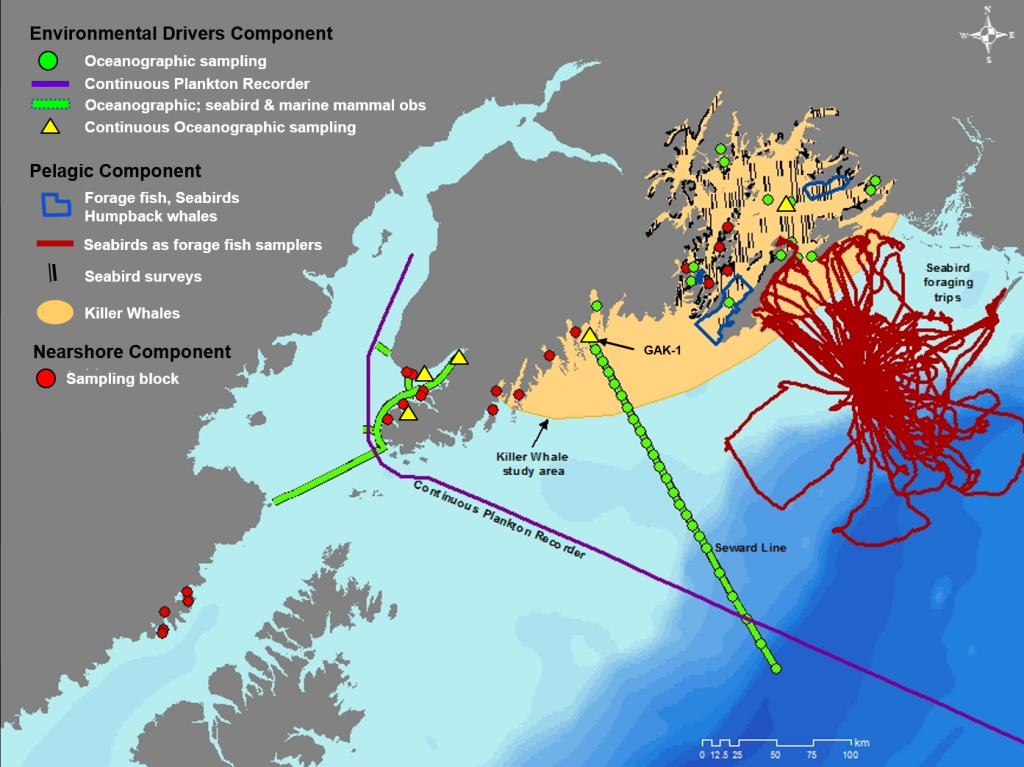Who We Are
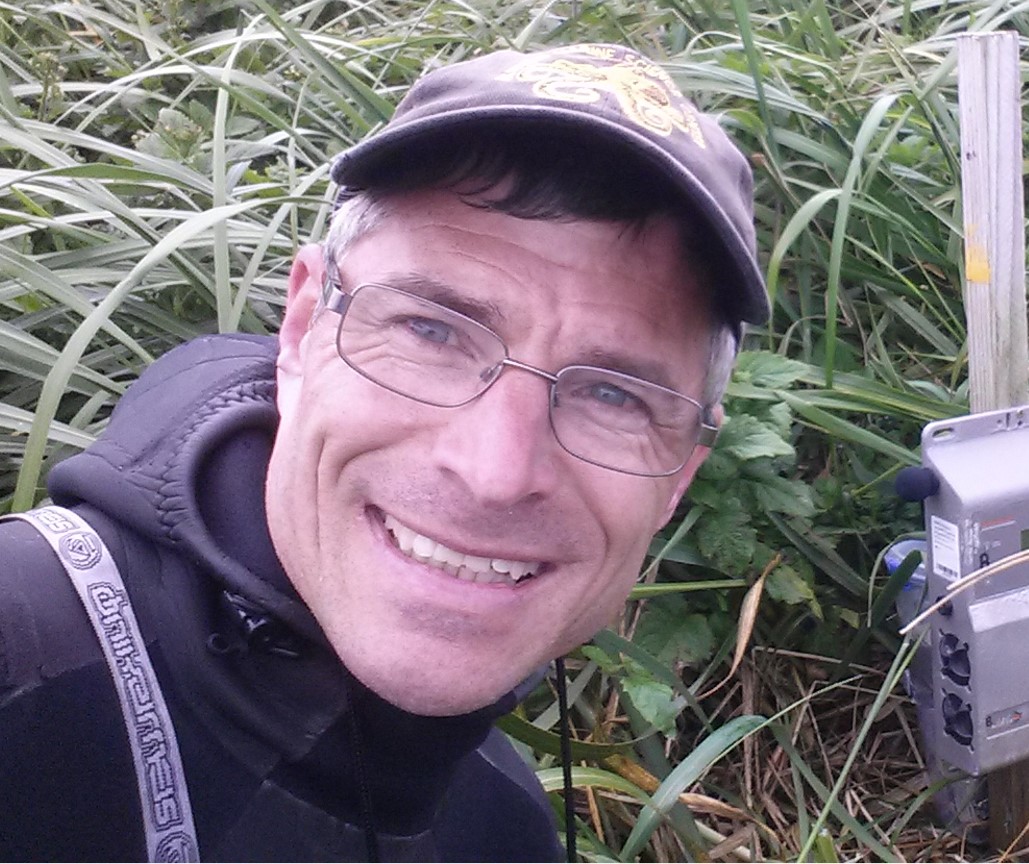
Rob Suryan, NOAA/NMFS Auke Bay Laboratory
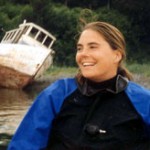
Mandy Lindeberg, NOAA/NMFS Auke Bay Laboratory
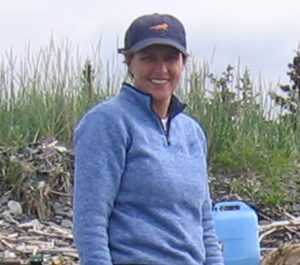
Donna Aderhold, NOAA Kasitsna Bay Lab
Gulf Watch Alaska
Sea science extraordinaire
Explore much we have
Why are we sampling?
Gulf Watch Alaska collects A LOT of data from different parts of the Gulf of Alaska and each dataset tells us a little about that specific part of the ecosystem. But what does it all mean? Good question! This is why science synthesis is so important. We use science synthesis to integrate across all of these different datasets to help understand how the entire Gulf of Alaska ecosystem responds from season to season and year to year. Variability over the past century has shown that short-term warming or cooling, such as El Niño or La Niña, as well as longer-term cycles such as the Pacific Decadal Oscillation can profoundly affect populations of marine species from plankton to whales and commercial fisheries. Similarly, lessons from Exxon Valdez oil spill studies clearly demonstrate the importance of understanding natural ecosystem variability in order to assess potential for recovery of injured resources.
Where are we sampling?
We synthesize data both across the Gulf Watch Alaska geographic sampling region (map above) and across time to understand what is affecting differing population responses to environmental variability. The Gulf Watch Alaska study area is the northern Gulf of Alaska from Prince William Sound west to Kachemak Bay and the Katmai Coast on the Alaska Peninsula. Sampling also extends from the nearshore rocky intertidal zone to the offshore oceanic domain. While this is a large geographic area, it represents but a portion of the entire Gulf of Alaska. Therefore, our science synthesis efforts include developing collaborations with other scientists sampling outside the Gulf Watch Alaska sampling area in the eastern and western Gulf of Alaska.
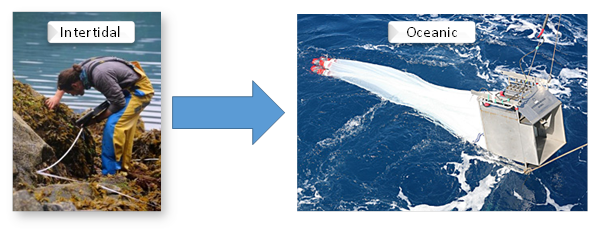
GULF WATCH ALASKA SAMPLING EXTENDS FROM INTERTIDAL ORGANISMS TO THOSE INHABITING OFFSHORE, OCEANIC DOMAINS. THE ROLE OF SCIENCE SYNTHESIS IS TO DETERMINE CONNECTIONS BETWEEN THESE DIFFERENT ECOSYSTEMS AND ASSESS HOW THEY RESPOND TO ENVIRONMENTAL VARIABILITY.
How are we sampling?
While sampling is occurring in the ways described by the individual components (environmental drivers, nearshore ecosystems, and pelagic ecosystems) of Gulf Watch Alaska on linked webpages, for science synthesis we use various analytical tools, including statistics and numerical models to quantify how various parts of the ecosystem are responding similarly or not. These types of analyses provide insight into what causes some marine species populations to respond favorably, while others respond negatively and how the system might change in the future.
Science synthesis also includes more than just data integration. Science synthesis helps evaluate whether the current sampling effort is continuing to meet overall program objectives, whether sampling modifications are needed to address unforeseen events, and how we can leverage resources and sampling with other programs including Herring Research and Monitoring, North Pacific Research Board’s Gulf of Alaska integrated ecosystem assessment project (GOAIERP), NOAA Fisheries surveys, and the new National Science Foundation Northern Gulf of Alaska Long-term Ecological Research effort.
What are we finding?
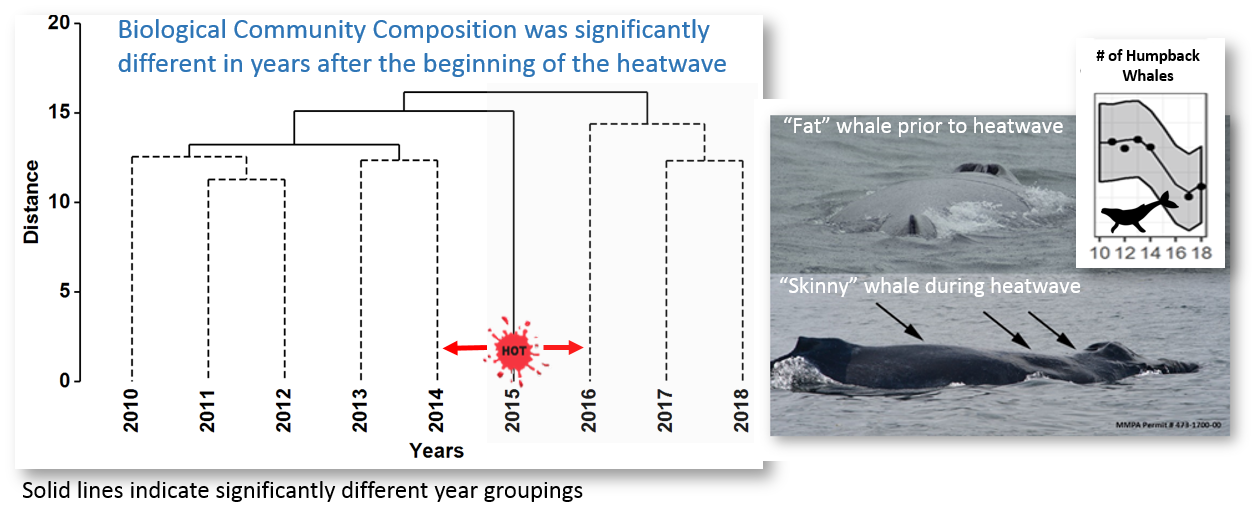
An analysis of 113 biological time series showed that Gulf of Alaska communities were markedly different during and after the onset of the heatwave in 2014 compared to before. Image of a robust (“fat” and healthy) whale before the heatwave and a “skinny”, nutritionally stressed whale during the heatwave (arrows indicate where lack of blubber makes bone contours visible under the skin).
Currently, we are evaluating the overall response of the Gulf of Alaska to the Pacific marine heatwave, the long-lasting marine heatwave recorded in recent times. This heatwave lasted two years and had peak strength in 2014-2016. Additional warming events and lingering effects, however, have occurred through at least 2019. This prolonged heatwave had major impacts on many marine species from zooplankton to seabirds, whales, commercial fisheries, and subsistence hunter/gatherers. For example, the heatwave appeared to lower the carrying capacity or the abundance of some animals that the Gulf of Alaska could support – causing a chain reaction that negatively affected many populations of zooplankton, fish, birds and mammals. Some highly visible signs of population level impacts included large scale mortality events (“die offs”) of birds and mammals and reduced commercial fishery yields. Likewise, even some intertidal species that are generally quite resilient due to routine exposure to wide temperature fluctuations, experienced synchronous declines across species and regions. In contrast, some species that favor warm water expanded in distribution and abundance. Gulf Watch Alaska, along with our many collaborators, will take an in-depth look at the negative and positive effects of this and other large-scale events to help understand how populations will respond and whether negatively affected resources will recover.
